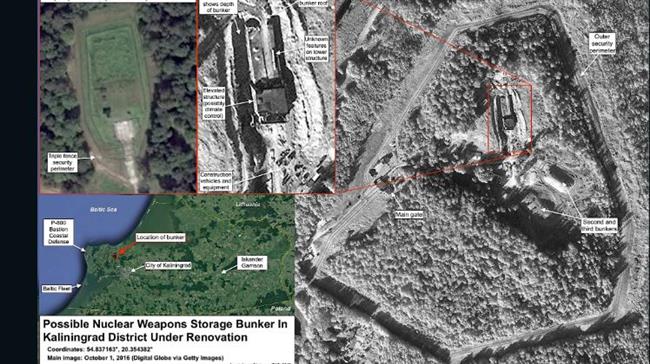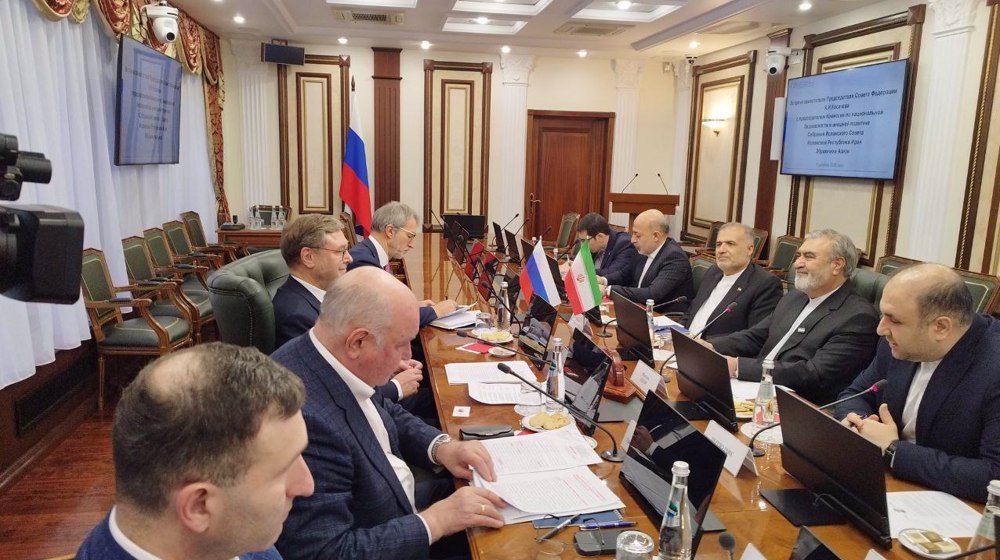Russia may have updraded nuclear weapons storage site in Kaliningrad: Satellite images
Russia may have upgraded a nuclear weapons storage bunker in its Baltic Sea exclave of Kaliningrad amid rising tensions between Moscow and NATO, a report suggests.
On Monday, the Federation of American Scientists (FAS) published satellite photographs that apparently show the weapons bunker wedged between Lithuania and Poland has been under major renovation since 2016.
Hans Kristensen, the director of the nuclear information project at FAS, said in a blog post that the facility, situated about 50 kilometers from the Polish border, has been extended underground and given a new roof in recent months “presumably to return (to) operational status soon.”
“It’s a site we have been monitoring for quite some time and there have been some upgrades in the past but nothing as dramatic as this one. This is the first time we’ve seen one of the nuclear bunkers being excavated and apparently renovated,” Kristensen said.
He, however, said that “the satellite images do not provide conclusive answers” to “questions about what the operational status of the site is.”
“The features of the site suggest it could potentially serve Russian Air Force or Navy dual-capable forces. But it could also be a joint site, potentially servicing nuclear warheads for Air Force, Navy, Army, air-defense, and coastal defense forces in the region,” Kristensen wrote.
“It is to my knowledge the only nuclear weapons storage site in the Kaliningrad region,” he continued.
According to Kristensen, Russia maintained that its nuclear warheads are stored in a central facility within Russia’s main borders.
He suggested that the facility in Kaliningrad “could potentially function as a forward storage site that would be supplied with warheads from central storage sites in a crisis.”
The Kremlin has not yet commented on reports of any renovation occurring at the site in Kaliningrad, which is home to Russia’s Baltic Fleet.
In February, US and European officials expressed concern after Russia deployed new Iskander missiles to its European exclave Kaliningrad.
A US defense official based in Europe described the deployment of missiles at the time as “the biggest move we’ve seen.”
In March, President Vladimir Putin said Russia has tested an array of strategic weapons that could not be intercepted and would render NATO defenses “completely useless.”
Russia is wary of NATO’s expansion on its doorsteps, where the US-led military alliance has deployed around 4,000 troops, including four battle groups, to Estonia, Lithuania, Latvia and Poland in recent years.
Realizing that security threat under its nose, Russia has held several military drills to maintain preparedness, with the NATO countries having then referred to those drills as signs that Russia has aggressive and not defensive intentions.
Moscow calls NATO’s military buildup at its doorstep a threat to its national security and accuses the alliance of fear-mongering to justify larger military expenditure by its member states.
Meanwhile, NATO -- largely made up of Western European countries -- accuses Russia of having a hand in a crisis in Ukraine, which Moscow denies.
Eastern Ukraine has been the site of a conflict since 2014, when the government in Kiev started a crackdown on pro-Russia protests in the country.
VIDEO | Top documentarians gather for 19th Cinema Verite in Tehran
Press TV's news headlines
VIDEO | Karachi hosts Iran trade exhibition to boost economic ties
VIDEO | 'War with Damascus inevitable': Syrians slam Israeli minister’s war statement
‘Get out, thief. Your mask has fallen’: Maduro denounces US for targeting Venezuela’s oil
UN rapporteur calls on Israel, key allies to cover cost of rebuilding Gaza
US lawmakers release more photos from Epstein estate featuring high-profile figures, including Trump
Iran crowned world’s top Greco-Roman wrestling powerhouse in 2025












 This makes it easy to access the Press TV website
This makes it easy to access the Press TV website